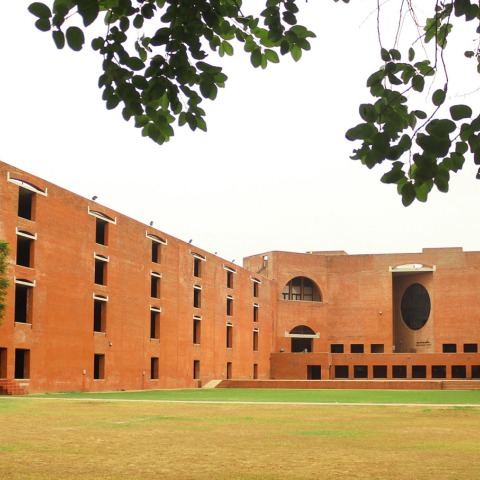The project of the entire complex, comprising the Vikram Sarabhai Library, the main school complex as well as the dormitories, began in 1962 and was completed in 1974 the same year the architect died. He born in 1901, in present-day Estonia, and he migrated in 1906 (when his family moved to the United States), Kahn would end up becoming one of the most important architects of the 20th century.
Acording the university Kahn's structures were built with bricks "istermed “second class bricks” which have grown brittle and weak. Load bearingareas have become particularlyvulnerable. The masonry has also been damaged by collection of water. The reinforcement bars are not protected by concrete casing. The earthquakein 2001 caused extensive damage."
Peter Inskip and Stephen Gee were who advised that they should on an experimental basis first restore one building, and after they could decide how best to take up further work in the other buildings.
The Dorm 15 and the Library were restored by SNK (Somaya &Kalappa Consultants). However, on completion of the restoration experiment the restored dormitory was deemed unsafe by a consultant "will resist moderate earthquakes with limited damage but there will be significant damage with severe earthquakes". On the other hand, the opinion about the library was stated that it would withstand a severe earthquake with minor damage.
Overall, the expert opinions have not satisfactorily allayed their concerns about the long-term structural stability of the restored dorm.
According to the letter's statement, these were the reasons put out the Expression of Interest proposing that "the core of the Louis Kahn buildings-the library, the faculty wings, and the class room complex – and the dorms on the periphery of the complex (Dorms16-18) would be restored, while the other dorms would be reconstructed."
The Board of Governors will now reconsider options
We seek your support as we try to find the best answer to the issuesof how to cater to our responsibility to a significant legacy, the safety of those who utilize the buildingsas well as being in tune with the needs of the future."

























